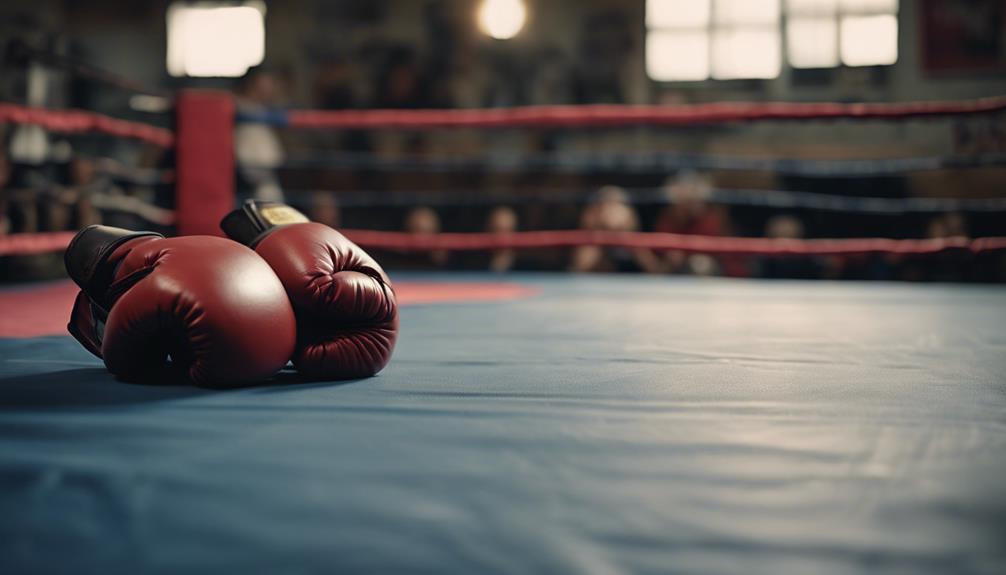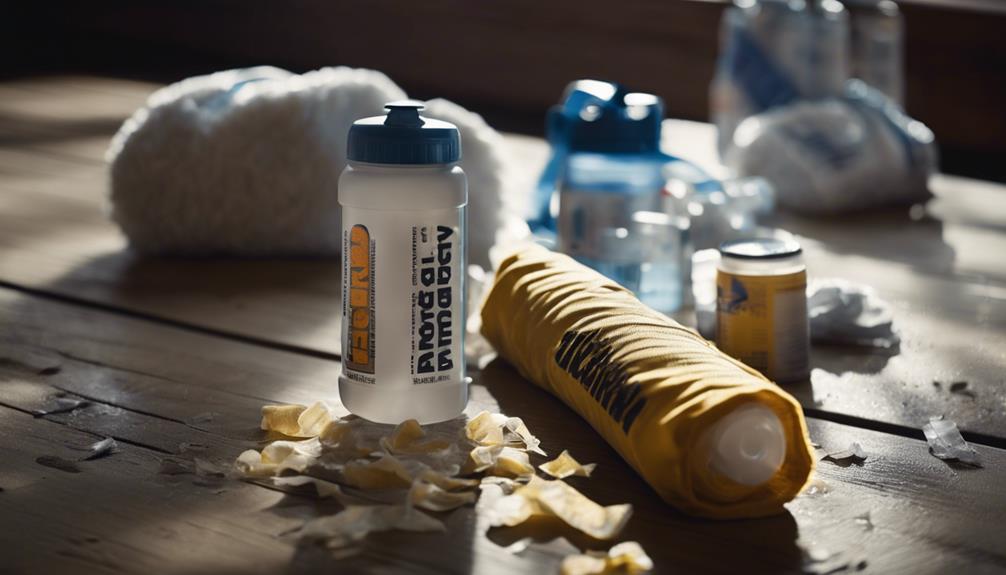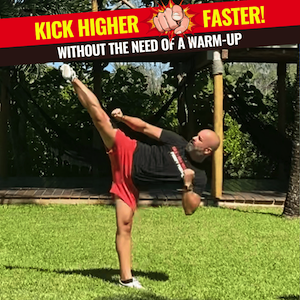As you continue to compete in combat sports as an older athlete, you must take extra precautions to minimize the risk of injury. Assess your physical condition regularly, focusing on cardiovascular health, joint stability, and muscle strength. Choose low-impact disciplines like tai chi or Aikido to reduce joint stress. Prioritize proper technique over physical power, and train with younger partners to maintain intensity and gain new insights. Stay hydrated and energized, and allow 24-72 hours of recovery time between intense workouts. By implementing these strategies, you'll be well on your way to safe and effective training – but there's more to explore.
Assess Your Physical Condition
As you lace up your gloves and prepare to step into the ring, it's essential to take a critical look at your physical condition – specifically, the cardiovascular, muscular, and skeletal systems that will be pushed to their limits during competition.
You must acknowledge that your physical condition can markedly impact your fighting techniques and strategies. Regular consultations with a healthcare professional will help you evaluate your overall health, including cardiovascular fitness, strength, and flexibility, which are all affected by the aging process.
Perform a thorough self-assessment to monitor any existing injuries, joint health, and muscle imbalances. This will allow you to tailor your training regimen to your specific needs, ensuring peak performance while minimizing the risk of injury.
Pay attention to changes in your body's response to exercise, such as increased fatigue or slower recovery times, as these can indicate the need for adjustments in your training intensity and volume.
Utilize fitness assessments, like VO2 max tests or functional movement screenings, to gain insights into your physical capabilities and limitations, and adjust your approach accordingly.
This proactive approach will enable you to adapt your training to your current fitness level, ensuring a safer and more effective fighting performance.
Choose Low Impact Disciplines
You can greatly reduce joint stress by opting for low-impact disciplines, which allow for intense physical activity without excessive strain on your joints.
Disciplines that focus on flexibility, such as tai chi or Aikido, can also enhance your range of motion and overall mobility.
Reduce Joint Stress
When selecting a fighting discipline as an older athlete, reducing joint stress should be a top priority. Engaging in low-impact disciplines, such as swimming or cycling, can help you achieve this goal while still providing cardiovascular benefits.
These exercises reduce the stress on your joints, making them ideal for older athletes who are more susceptible to joint injuries.
Research indicates that low-impact exercises can mitigate the risk of joint pain and degeneration, common concerns for athletes over 40. Incorporating low-impact training methods can also promote recovery and maintain fitness levels, allowing you to train effectively without excessive strain.
Moreover, choosing disciplines that emphasize proper biomechanics, such as tai chi, can improve balance and coordination while reducing the likelihood of joint injuries.
Disciplines for Flexibility
Emphasizing flexibility through low-impact disciplines is fundamental for older athletes seeking to maintain a healthy, active lifestyle. As you age, your muscle mass and strength decline, making you more prone to injuries. Engaging in low-impact activities can help mitigate this risk.
You should consider disciplines like yoga and Pilates, which enhance flexibility, balance, and core strength. These exercises are essential for injury prevention and can be modified to suit your fitness level.
Other low-impact disciplines, such as swimming and cycling, provide an effective cardiovascular workout while reducing joint strain. Tai Chi is another option, promoting stability, coordination, and mental relaxation through slow, controlled movements.
Low-impact martial arts like Aikido or Judo can also help you maintain agility and reflexes without the high risk of injury associated with more intense combat sports. By incorporating these activities into your routine, you'll improve your overall flexibility and prevent muscle atrophy, ensuring you remain physically functional as you age.
Regular participation in low-impact disciplines is critical for maintaining a healthy, active lifestyle as an older athlete. By choosing the right activities, you'll be able to stay flexible and mobile while minimizing the risk of injury.
Impact on Joints
Numerous studies have shown that high-impact activities can accelerate joint degeneration, making it essential for older athletes to prioritize low-impact disciplines that minimize joint stress.
As an older athlete, you must consider the impact of your training on your joint health. Engaging in low-impact disciplines such as swimming, cycling, and rowing can help minimize joint stress while maintaining cardiovascular fitness and strength.
- Engage in martial arts forms like Tai Chi and Aikido, which promote balance and flexibility without high impact.
- Use proper techniques and supportive equipment, like cushioned mats or padded gear, in low-impact fighting disciplines.
- Prioritize disciplines that reduce wear and tear on your joints, fostering better recovery and reducing injury risk.
- Select low-impact training methods to remain active and engaged in your sport.
- Reduce the risk of joint degeneration by choosing low-impact activities that promote overall fitness and strength.
Warm Up and Cool Down
As you prepare for physical activity, a well-structured warm-up is essential, particularly for older athletes. Warming up increases blood flow to muscles, enhancing flexibility and reducing the risk of injuries, which is especially important for older athletes whose recovery times are longer.
A proper warm-up should last at least 10-15 minutes and include dynamic stretches and movements that mimic the activity to be performed, preparing the body for exertion.
After your workout, cooling down is just as important. This phase aids in gradually lowering your heart rate and preventing blood pooling, which is critical for maintaining cardiovascular health and preventing dizziness.
Incorporating static stretching into your cool-down can improve flexibility and range of motion, helping to counteract age-related muscle stiffness.
Focus on Technique Over Strength
When you've established a solid warm-up and cool-down routine, it's time to shift your focus to the actual training. As an older athlete, you may experience performance decline regarding muscle mass and strength.
To counteract this, focus on technique over strength. Emphasizing technique allows you to maintain a high level of performance without relying solely on physical power.
Proper technique enhances efficiency, reducing the risk of injury – an essential consideration for older fighters who may be more susceptible to physical strain.
By mastering techniques such as footwork, positioning, and timing, you'll be able to maintain competitiveness against younger opponents.
Key benefits of focusing on technique include:
- Improved efficiency in executing moves
- Enhanced body awareness and control
- Reduced risk of injury
- Ability to compensate for decreased speed and agility
- Effective execution of moves in sparring or competition
Train With Younger Partners

How do you stay motivated and driven in your training routine as an older athlete? One effective way is to train with younger partners. This approach can push you to maintain a higher intensity during workouts, ultimately enhancing your overall athletic performance and fitness levels.
Younger training partners bring a fresh perspective and energy to workouts, helping you stay motivated and engaged in your training routines. Collaborating with younger athletes also provides opportunities for skill exchange. You can share your experience and strategy while learning new techniques and approaches from your partners.
Additionally, training with younger individuals can improve your speed and agility, as the competitive environment encourages you to push your limits safely. Engaging in partner workouts with younger athletes can also foster a sense of community and support, essential for maintaining long-term athletic involvement and enjoyment.
Listen to Your Body
As an older athlete, you must recognize your limits and take proactive steps to prevent injuries, which can have a significant impact on your training and competition schedule.
By prioritizing injury prevention, you'll be able to maintain a consistent training regimen and adapt to the physical demands of fighting.
To achieve this, it's crucial to respect your recovery time, allowing your body to repair and rebuild between intense training sessions.
Recognize Your Limits
Your body undergoes significant changes as you age, and acknowledging these changes is crucial for safe and effective training. As an older athlete, you must recognize your limits and adjust your training regimes accordingly. Ignoring the physical changes in your body can lead to injuries that may take longer to heal.
To recognize your limits, pay attention to signs of fatigue, pain, or discomfort. It's important to listen to your body and take regular assessments of your movement quality to identify limitations and prevent injuries.
Here are key considerations:
- Assess your movement quality regularly to identify limitations and prevent injuries
- Adapt your training regimes to accommodate for longer recovery times, which may be up to 48 hours more than your younger counterparts
- Set realistic goals and adjust expectations to foster a positive mindset and minimize the risk of overexertion
- Prioritize exercises that promote flexibility and mobility to counteract reduced flexibility
- Be aware of your reduced strength and recovery capacity, and adjust your training intensity and volume accordingly
Prioritize Injury Prevention
Building on the importance of recognizing your limits, prioritizing injury prevention becomes even more vital as you age. As an older athlete, you're more prone to injuries and longer recovery times, making it essential to listen to your body during training. Recognize early signs of fatigue or discomfort, as ignoring them can lead to tendonitis and muscle strains due to reduced elasticity and resilience.
To prevent injuries, implement a structured warm-up routine that focuses on mobility to enhance joint function and prepare your body for physical activity. Adjust the intensity and duration of your workouts based on how you feel, accommodating your changing physical capabilities. This allows for a sustainable training regimen that prioritizes health.
Regular strength training is also important for injury prevention. As you age, your muscle mass naturally declines, increasing your risk of injury. By incorporating strength training into your routine, you can improve muscle mass and joint stability, greatly reducing your risk of injury.
Respect Recovery Time
Entering a new decade of life doesn't mean your athletic pursuits have to slow down, but it does require acknowledging your body's changing needs. As you age, your body requires longer recovery periods due to decreased muscle regeneration and hormonal changes. Ignoring these changes can lead to injury and overtraining, ultimately impacting your performance and work responsibilities.
To respect your recovery time, consider the following strategies:
- Allow 24-72 hours of recovery between intense workouts, depending on your individual recovery rate and training intensity.
- Incorporate rest days and lighter training sessions into your weekly schedule to enhance recovery without sacrificing overall fitness.
- Monitor your resting heart rate and perceived exertion to gauge your recovery needs and adjust training loads accordingly.
- Prioritize recovery strategies, such as proper nutrition, hydration, and sleep, to improve performance outcomes and longevity in sports.
- Be flexible with your training schedule, and don't be afraid to take extra rest days as needed to avoid burnout and prevent overtraining.
Stay Hydrated and Energized

Eight to ten glasses of water per day is the minimum hydration requirement for older athletes, with adjustments needed based on activity level and climate. You must stay hydrated to maintain peak performance, as dehydration can lead to decreased performance, increased fatigue, and higher risk of injury.
Consuming electrolyte-rich fluids, especially during prolonged or intense exercise, helps maintain fluid balance and muscle function, which is crucial for preventing cramping and heat-related illnesses.
To sustain energy levels, regularly fuel your body with nutrient-dense snacks, such as fruits, nuts, or energy bars. A diet rich in whole foods, lean proteins, and healthy fats supports muscle recovery and overall energy levels, helping to combat age-related declines in strength and stamina.
Consider utilizing specialized nutrition products, like XRCEL, which deliver essential carbohydrates and electrolytes to enhance performance and recovery during and after physical activities.
Cross Train for Injury Prevention
While a well-structured training program is essential for older athletes, incorporating cross-training into your regimen can markedly reduce the risk of overuse injuries and enhance overall fitness.
By balancing the stress placed on specific muscle groups through varied activities, you can maintain overall fitness while reducing the risk of injury.
Incorporating cross-training into your routine can have numerous benefits, including:
- Reducing joint strain through low-impact exercises like swimming or cycling
- Enhancing muscle mass and bone density through strength training
- Improving range of motion and reducing stiffness through flexibility and mobility exercises like yoga or Pilates
- Allowing for recovery from specific injuries while maintaining overall conditioning
- Promoting a more sustainable athletic career through diversified training routines
Get Enough Rest and Recovery

As an older athlete, your body demands more recovery time between intense workouts due to natural physiological changes, such as hormonal declines that heighten your risk of injury and illness.
You can't afford to neglect this vital aspect of training, as insufficient recovery can lead to biochemical stress, negatively impacting your mental outlook and performance.
To optimize your training effectiveness and minimize injury risk, you need to prioritize monitoring recovery needs. Track your resting pulse and workout performance to gauge your body's recovery status.
Incorporate active recovery days into your training schedule to enhance resilience and overall capacity, ensuring sustainable strength and conditioning gains.
Plan recovery strategies, including adequate rest periods and lighter training sessions, to maximize your performance longevity.
Don't underestimate the importance of recovery time; it's essential for allowing your body to adapt to the physical demands of intense training.
By prioritizing recovery, you'll be better equipped to handle the rigors of training and maintain a high level of performance.
Effective monitoring recovery enables you to adjust your training schedule accordingly, reducing the risk of injury and illness.
Consult With a Medical Professional
You must consult with a medical professional to assess your individual health risks and guarantee safe participation in fighting sports.
As an older athlete, you're more prone to age-related changes that can impact your ability to train and compete safely, and a physician can help identify these risks.
Assess Your Health
Take a proactive approach to your health by consulting with a medical professional before starting or continuing a fighting regimen.
As an older athlete, it's crucial to assess your health status and physical capabilities to guarantee safe participation in fighting activities. Regular health evaluations help identify potential risks and allow for tailored training programs.
To assess your health, consider the following:
- Cardiovascular health: evaluate your heart's ability to handle intense physical activity
- Joint conditions: assess the health of your joints, particularly those prone to injury, such as knees and shoulders
- Muscle strength: determine your muscle strength and endurance to establish safe intensity levels
- Flexibility evaluations: assess your range of motion and flexibility to prevent injury
- Medical history: review your personal health history to identify potential risks and complications
Identify Safety Risks
Consulting a medical professional is essential for identifying safety risks in older athletes, particularly when it comes to evaluating pre-existing conditions or age-related changes that may affect performance and safety.
As you prepare to engage in sports, you need to undergo a detailed medical evaluation to identify any potential risks. This evaluation will assess your cardiovascular health, joint stability, and any age-related changes that could impact your performance and safety.
Your medical professional will provide personalized recommendations for training intensity and recovery protocols tailored to your specific health status. They'll also advise on injury prevention strategies, including appropriate warm-up routines and recovery practices suited for older athletes.
This will help you make informed decisions regarding your training regimens and competitive participation, minimizing the likelihood of injuries. By working closely with a medical professional, you can guarantee that you're aware of any potential safety risks and take proactive steps to mitigate them.
A thorough medical evaluation will help you develop a safe and effective training plan, enabling you to perform at your best while minimizing the risk of injury or harm. This critical work will pay off as you continue to engage in sports.
In Summary
As you age, your body becomes more fragile, but your will to fight remains unbroken. While youthful vigor may be lost, experience and strategy are gained. By following these 10 tips, you'll be able to adapt your training to your maturing body, mitigating risks while maximizing rewards. Don't let Father Time deliver the knockout punch – stay safe, stay smart, and keep fighting, leveraging your wisdom and guile to outmaneuver the competition.



